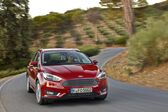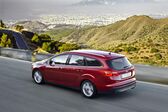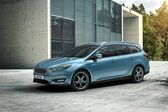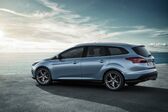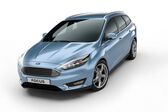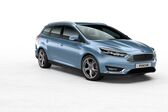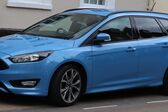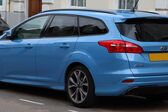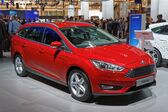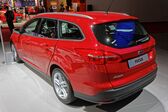Car Specs Ford Focus Focus III Wagon (facelift 2014) ST 2.0 EcoBoost (250 Hp) S&S
Ford Focus III Wagon (facelift 2014) ST 2.0 EcoBoost (250 Hp) S&S Specs
Ford Focus III Wagon (facelift 2014) ST 2.0 EcoBoost (250 Hp) S&S has been in production since 2014 - 2018. Cars comes in Station wagon (estate) body types and can be suited with Petrol (Gasoline) engine types with a volume of 2L liters, engines produces a power of 250 Hp. Fuel consumption of Ford Focus III Wagon (facelift 2014) ST 2.0 EcoBoost (250 Hp) S&S is 6.8 l/100 km. The overall dimensions of the car are 4563x1823x1486 mm, and the weight is from 1461 kg.
General data Generation Focus III Wagon (facelift 2014) Modification ST 2.0 EcoBoost (250 Hp) S&S Start of production 2014 year End of production 2018 year Powertrain Architecture Internal Combustion engine Body type Station wagon (estate) Seats 5 Doors 5 Fuel Type Petrol (Gasoline) Model R9DA Fuel consumption (economy), emissions Fuel consumption - urban 8.8 l/100 km Fuel consumption - extra urban 5.7 l/100 km Fuel consumption - combined 6.8 l/100 km CO2 emissions 159 g/km Emission standard Euro 6 Performance specs Acceleration 0 - 100 km/h (0 - 62 mph) 6.7 sec Maximum speed 248 km/h Weight-to-power ratio 5.8 kg/Hp, 171.1 Hp/tonne Engine technical data Power 250 Hp @ 5500 rpm. Power per litre 125 Hp/l Torque 360 Nm @ 2000-4500 rpm. Engine location Front, Transverse Engine displacement 2000 cm3 Number of cylinders 4 Position of cylinders Inline Cylinder Bore 87.5 mm Piston Stroke 83.1 mm Compression ratio 9.3 Number of valves per cylinder 4 Fuel System Direct injection Engine aspiration Turbocharger, Intercooler Valvetrain DOHC Engine oil capacity 5.4 l Coolant 6.45 l Engine systems Start & Stop System Suspension and brakes specs Drivetrain Architecture The Internal combustion engine (ICE) drives the front wheels of the vehicle. Drive wheel Front wheel drive Number of Gears (manual transmission) 6 Front suspension Independent type McPherson Rear suspension Double wishbone Front brakes Ventilated discs Rear brakes Disc Assisting systems ABS (Anti-lock braking system) Steering type Steering rack and pinion Tires size 235/40 R18; 235/35 R19 Wheel rims size 8.5J x 18; 8.0J x 19 Dimensions Length 4563 mm Width 1823 mm Height 1486 mm Wheelbase 2648 mm Front track 1550 mm Rear (Back) track 1534 mm Minimum turning circle (turning diameter) 12.4 m Weights, volume and space Kerb Weight 1461 kg Max. weight 2025 kg Max load 564 kg Trunk (boot) space - minimum 476 l Trunk (boot) space - maximum 1502 l Fuel tank capacity 62 l
 Ford Focus III Wagon (facelift 2014) ST 2.0 EcoBoost (250 Hp) S&S has been in production since 2014 - 2018. Cars comes in Station wagon (estate) body types and can be suited with Petrol (Gasoline) engine types with a volume of 2L liters, engines produces a power of 250 Hp. Fuel consumption of Ford Focus III Wagon (facelift 2014) ST 2.0 EcoBoost (250 Hp) S&S is 6.8 l/100 km. The overall dimensions of the car are 4563x1823x1486 mm, and the weight is from 1461 kg.
Ford Focus III Wagon (facelift 2014) ST 2.0 EcoBoost (250 Hp) S&S has been in production since 2014 - 2018. Cars comes in Station wagon (estate) body types and can be suited with Petrol (Gasoline) engine types with a volume of 2L liters, engines produces a power of 250 Hp. Fuel consumption of Ford Focus III Wagon (facelift 2014) ST 2.0 EcoBoost (250 Hp) S&S is 6.8 l/100 km. The overall dimensions of the car are 4563x1823x1486 mm, and the weight is from 1461 kg.
